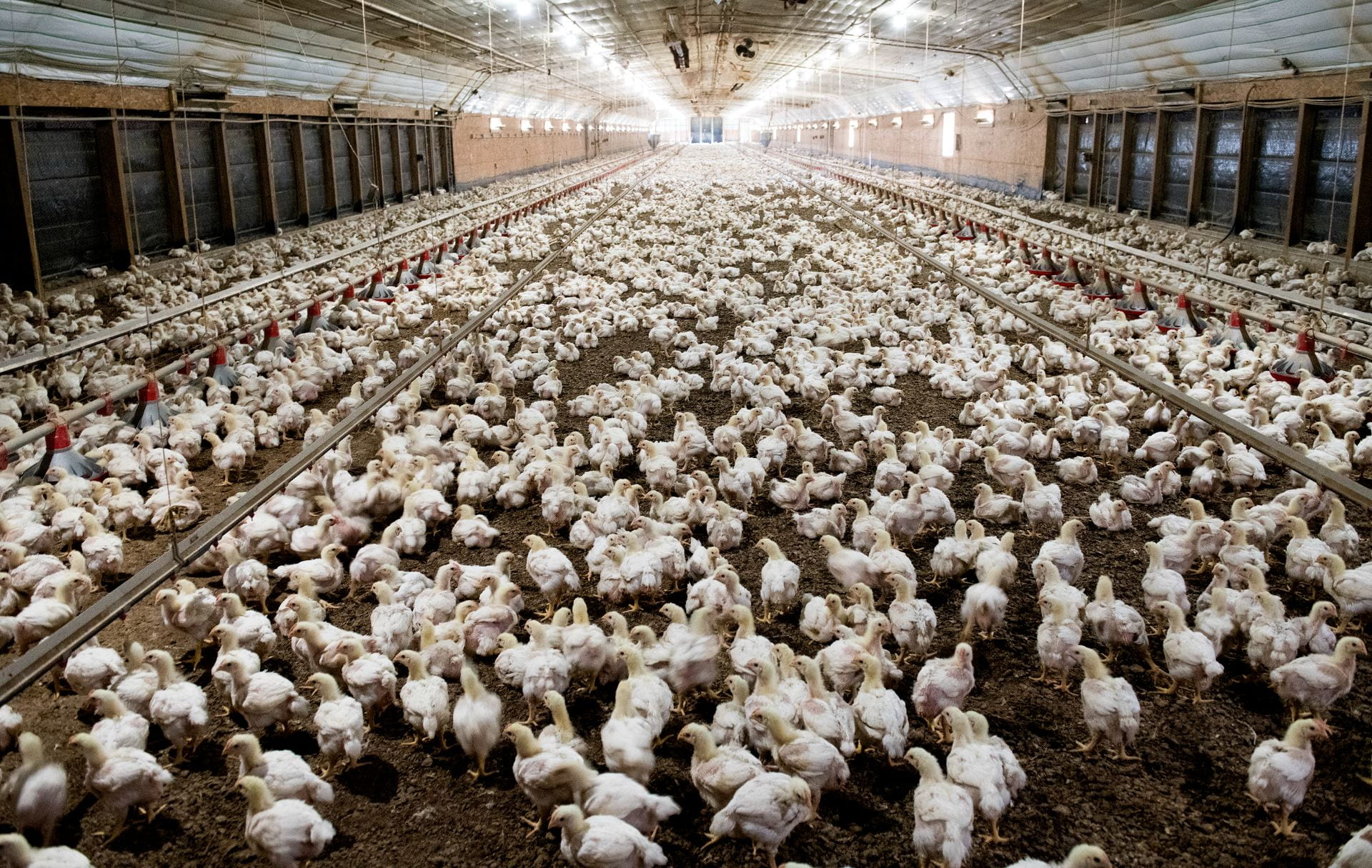July 2025 Arkansas Ag Research Report
- The Arkansas Agricultural Experiment Station has a new administrator focused on supporting and expanding external funding opportunities.
- The first new muscadine varieties from the Arkansas Fruit Breeding Program are cold-hardy and “mighty fine.”
- Probiotics show promise of keeping chicks healthier in hatcheries.
- Turfgrass research clears up the confusion for golf course grounds keepers.
- Meat and muscle biology scientists show how to store your beef in the freezer.
- Nanotechnology advancements could mean better health for humans and animals.
Listen to This Newsletter 🎧
Big News
Two new varieties of muscadines set for fall release, expand growing season
Two new varieties of muscadine not only promise a longer growing season but also recall two Arkansas icons: Altus™, named after the state’s wine capital; and Mighty Fine™, a name that describes its flavor and a favorite phrase of retired fruit breeder John Clark.
Altus™ and Mighty Fine™ are being released this fall by the Arkansas Agricultural Experiment Station. Margaret Worthington, director of the Fruit Breeding Program for the experiment station, noted that although muscadines are known for being susceptible to damage when exposed to cold temperatures, both new varieties stand out for their ability to withstand colder weather compared to other muscadine varieties.
“We are all excited about our first two muscadine releases,” said Parker Cole, associate director of technology commercialization for the University of Arkansas System Division of Agriculture. “Mighty Fine™ and Altus™ are great varieties and are a testament to the hard work and dedication of our Fruit Breeding Program team to deliver new varieties for producers.”
Kariyat teaches courses in the entomology and plant pathology department for the Dale Bumpers College of Agricultural, Food and Life Sciences at the University of Arkansas, and has an appointment with the Arkansas Cooperative Extension Service.
“With the additional resources available, as a lab, we hope to better understand plant response to both biotic and abiotic stressors, with the goal of building resilient crops that benefit the state of Arkansas, and beyond, while also developing novel pest management tools that can be employed for sustainable agriculture,” Kariyat said.
Arkansas Research Alliance awards additional funding for essential research
Three researchers with the University of Arkansas System Division of Agriculture were awarded bonus grants from the Arkansas Research Alliance, with supportive funding from industry partners, for projects that develop innovative applications of rice and soybeans.
All three of the researchers are in the food science department: Samira Feyzi, an assistant professor of analytical protein chemistry; Scott Lafontaine, an assistant professor of food chemistry; and Mahfuzur Rahman, an assistant professor and grain processing engineer.
Sides’ new role as associate director for research development and compliance at the experiment station focuses on supporting and expanding external funding opportunities and maintaining compliance with grant requirements.
“I want to help our researchers thrive in their own innovative endeavors,” Sides said. “Their research is synonymous with impact for Arkansans, and for me, there is no better vision than for the experiment station to be the collaborative leader in research development initiatives that result in increased impact for the state.”
Research Spotlights
Probiotics prove to be powerful chick hatchery disinfectant
Scientists with the Center of Excellence for Poultry Science sought a way to eliminate harmful microbes in poultry hatcheries while preserving the helpful ones.
Danielle Graham, assistant professor of poultry science with Bumpers College and the Division of Agriculture’s Arkansas Agricultural Experiment Station, led a study showing that some strains of probiotics reduced harmful bacteria just as well as formaldehyde, an industry standard treatment that also destroys beneficial microorganisms. The study was published in the Poultry Science journal.
Look to the data, not the marketing: Turfgrass research shows no differences in ‘penetrant’ and ‘retainer’ wetting agents
Turfgrass researchers with the Arkansas Agricultural Experiment Station have helped the turfgrass industry clear up confusion over soil surfactants used as wetting agents on golf course putting greens that are marketed by different names.
Mike Richardson, professor of horticulture for the experiment station, said that in the absence of data from the federal registration and labeling process, marketing terminology and anecdotal evidence have been used instead. Their study found inconsistent differences in wetting agents marketed as “penetrants” and “retainers.”
How do I store beef in the freezer?
Bulk purchasing of beef for at-home frozen storage has its advantages for extended shelf life, but new research offers insight on how to do it and retain the most quality.
Derico Setyabrata, an assistant professor of meat science and muscle biology, recently published a study showing that larger cuts retain color quality better compared to freezing beef as individual steaks.
Setyabrata and his fellow researchers also found that typical consumer freezing practices only minimally impacted the final product quality. The study was published in Meat and Muscle Biology, the official journal of the American Meat Science Association.
Refining Nanotechnology to Enhance Absorption of Meds, Probiotics
Controlled-release systems deliver medication and other bioactive compounds to the ideal spot inside a body and over a specific time. New research could improve these systems used for probiotics that boost gut health, drugs that target cancer cells and other medications for human and animal health using nanotechnology. The findings were published in a recent issue of the journal Carbohydrate Polymers.
Watch
Elvis Elli – Increasing Productivity & Sustainability
Elvis Elli, crop physiologist at the University of Arkansas System Division of Agriculture, uses data-driven models to predict how crops respond to extreme weather events. By combining field studies with crop modeling, Elli helps farmers in Arkansas and beyond improve productivity and resilience in a changing environment.
In this episode of Food, Farms & Forests, we spoke with Derico Setyabrata, assistant professor of meat science and muscle biology with the animal science department, about a recent study looking at how to optimize long-term storage of beef in the freezer.
After comparing three cuts of meat, in whole sections and cut into steaks, with freeze-thawing cycles in industrial blast freezers and two types of freezers found in most homes, Setyabrata found that the size and cut of beef matters.
Hot off the Press
Arkansas Corn and Grain Sorghum Research Studies 2024
The latest edition of the Corn and Grain Sorghum Research Studies publication includes research updates on weed, disease, nematode, and insect management studies, irrigation and agronomics, soil fertility and more. Download the report to learn about the development of a drone imagery-based stand counting app, find out about a potential option for feral hog control, and check out last year’s research verification program results.
Upcoming Events
- August 5 – Weed Science Field Day at the Pine Tree Research Station
- August 6 – Turfgrass Field Day
- August 6 – Weed Science Field Day at the Northeast Research and Extension Center
- August 7 – Getting to the Root of Crop Health: Stratified Substrates for Nursery and Greenhouse Crops
- August 7 – Rice Field Day at the Rice Research and Extension Center in Stuttgart
- August 8 – Weed Science Field Day at the Rice Research and Extension Center
- August 14 – Pine Tree Research Station Field Day
- August 28-29 – Poultry Litter Management Workshop
- September 9 – Muscadine Field Day at the Fruit Research Station



















